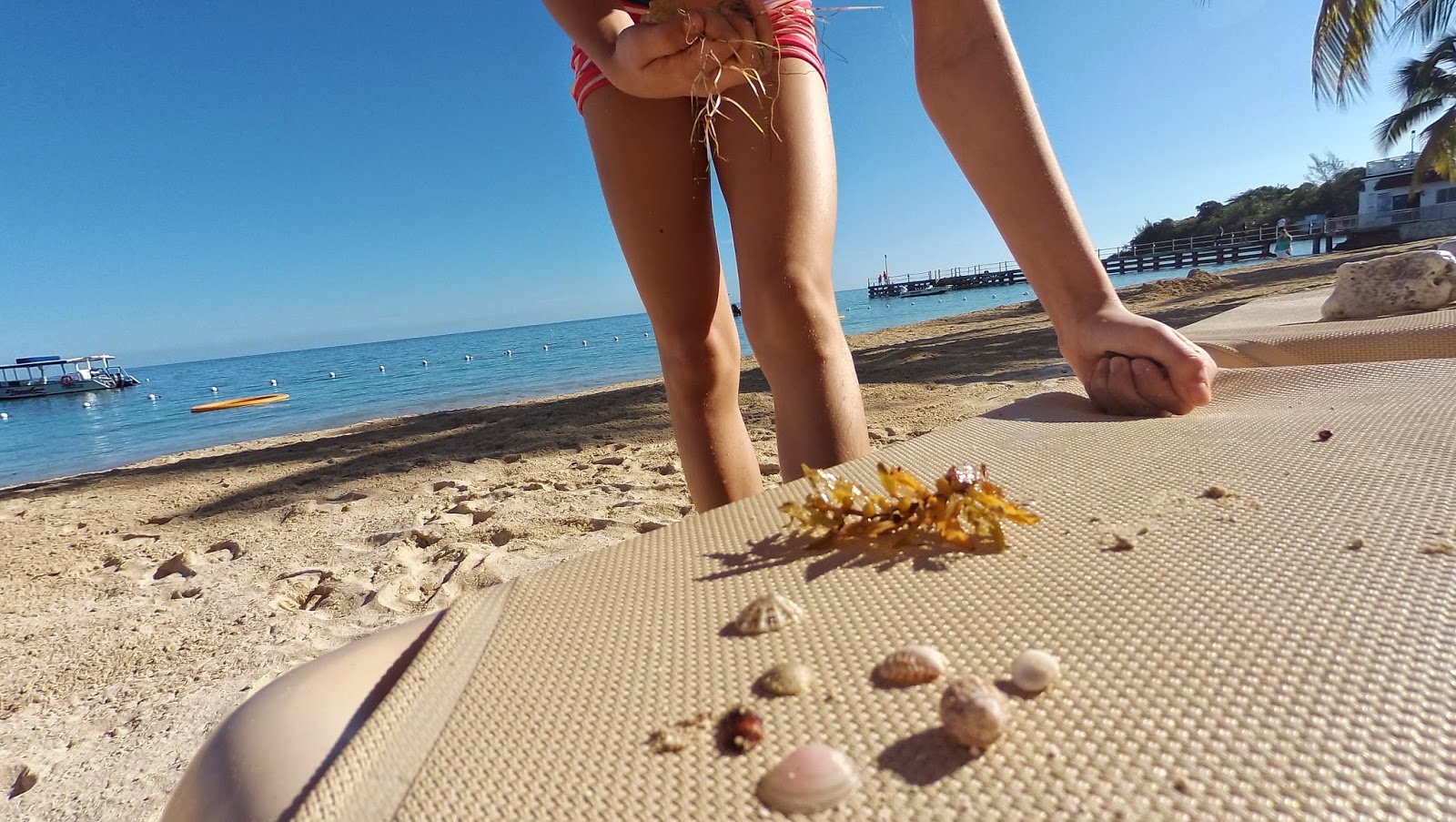Why can't you see it in the background of this picture? Because the lifeguard had just spent the last hour raking it all up. And—here's the thing that did surprise us—burying it in this hole:
When we asked him why, he looked at us like we were bananas! "To get it off the beach—it's a nuisance!" he said. He claimed that if he buried seaweed in this hole, in 2 or 3 weeks time the seaweed would be completely decomposed.
His timeframe may have been a little on the fast side. But it turns out, burying seaweed is a good idea for a couple of reasons. For starters, if it's buried, you can't smell it as it rots and releases hydrogen sulfide gas—which can make you feel sick to your stomach. Second, if it decomposes in the sand—instead of on top of it, where it would also get washed away in addition to being extra-smelly—it provides nutrients to beach plants. (Not seen here: a coconut palm, which was growing right next to this hole.) It turns out, seaweed contains every important plant nutrient there is. They help the soil (or in this case, sand) hold more water for plants to drink. And they also stimulate the stems and roots of the plants so they grow bigger and faster. Hurray for seaweed!


No comments:
Post a Comment